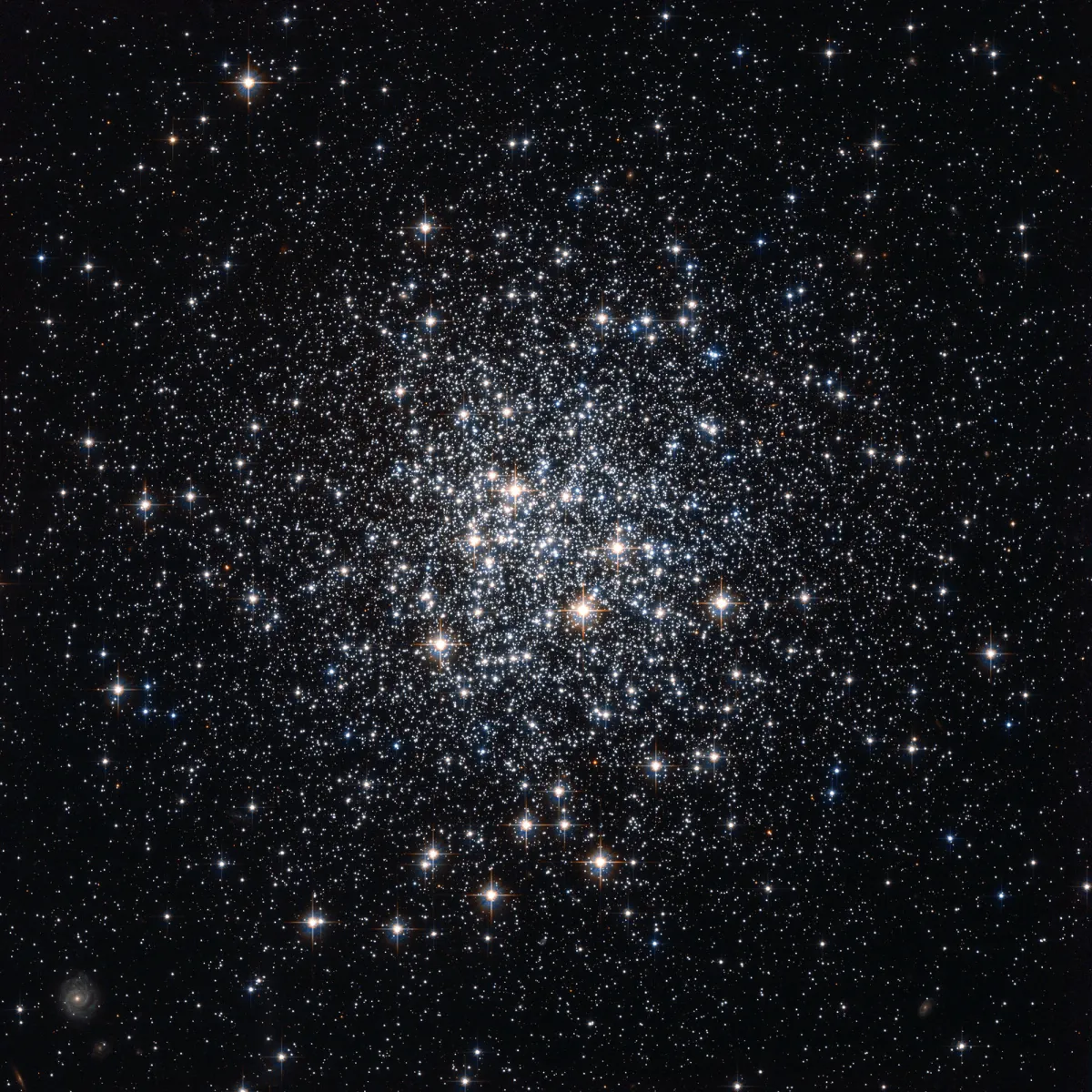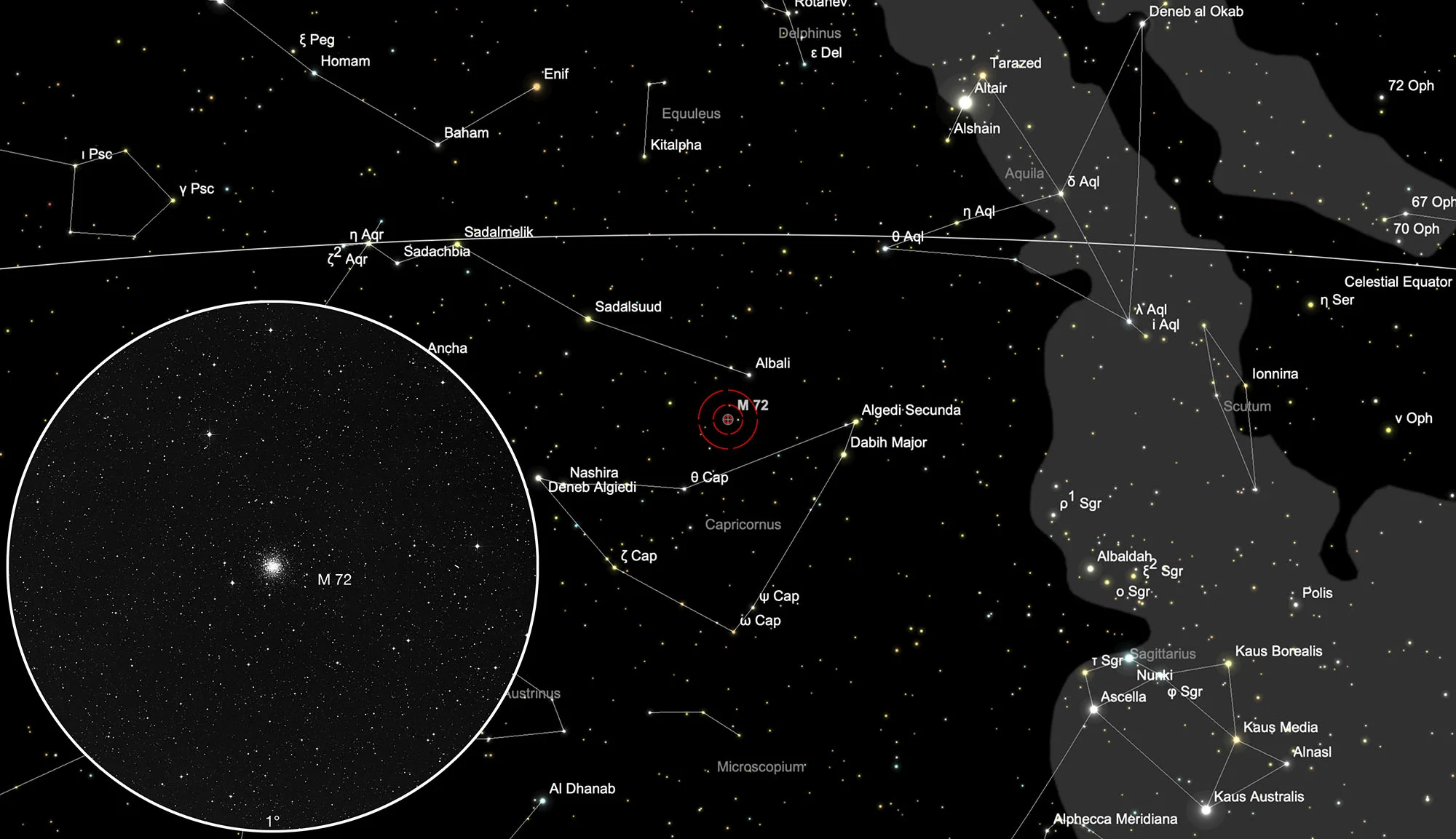Globular Cluster Messier 72

History
The globular cluster was discovered by Pierre Méchain on the night of August 29th to 30th, 1780 and again visited and confirmed by Charles Messier on the night of October 4th to 5th. He described it as «faintly shining like the previous one [M 71] with a small star next to it.» [196, 281]
Physical Properties
M 72 is 17 kpc (55'500 light years) from Earth and 12.9 kpc (47'000 light years) from the galactic centre. It has the mass of 168'000 suns. [148, 251]
| Designation | NGC 6981 |
| Type | GCL (IX) |
| Right Ascension (J2000.0) | 20h 53m 27.9s |
| Declination (J2000.0) | -12° 32' 11" |
| Diameter | 6.6 arcmin |
| Visual magnitude | 9.2 mag |
| Metric Distance | 17.000 kpc |
| Dreyer Description | globular, pB, pL, R, gmCM, rrr |
| Identification, Remarks | h 2090; GC 4608; M 72; GCL 118 |
Finder Chart
M 72 is located in the constellation Aquarius. On the line between the stars Albali (ε Aquarii) and θ Capricorni, it lies roughly in the first third. About 1° 20' east of it is the small star group M 73. The best observation time is April to January.
